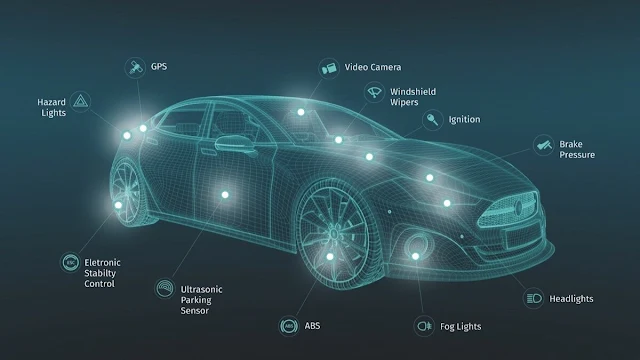Estimated Reading Time: 5 minutes
 How to Choose the Perfect Car for Your Family
How to Choose the Perfect Car for Your Family
When it comes to selecting the right car for your family, the decision can often feel overwhelming. With so many options available, from spacious SUVs to fuel-efficient sedans, it's essential to consider a range of factors to ensure you’re making the best choice for your needs. In this guide, we’ll break down expert tips to help you choose the perfect family car, ensuring it meets your requirements for safety, space, comfort, and budget.
1. Understand Your Family’s Specific Needs
Before diving into the sea of car options, it's crucial to evaluate your family’s lifestyle. This initial step will help you narrow down your choices significantly. Consider the following:
- Family size: Are you a family of 3 or 5? If you have young children, you might need extra space for strollers or car seats.
- Commute and travel habits: Do you need a car for daily city commuting or for long road trips? A fuel-efficient car might suit city drivers, while a larger SUV could be ideal for road trips.
- Cargo space requirements: Do you frequently carry sports equipment, groceries, or luggage? A spacious trunk is a key consideration.
- Driving conditions: Do you live in a region with harsh winters or rural areas that require 4-wheel drive?
Key Takeaway: The more you understand your family’s specific requirements, the easier it will be to select the right car.
2. Safety Features and Ratings
The safety of your family should be a top priority when choosing a vehicle. Family-friendly cars are designed with a variety of advanced safety features that can help protect your loved ones on the road.
Look for these safety features:
- Automatic emergency braking (AEB): This system can detect an impending collision and apply the brakes if necessary.
- Blind-spot monitoring: Alerts you when vehicles are in your blind spots, helping to avoid accidents.
- Rearview cameras and parking sensors: Helpful when reversing and parking, ensuring safety for both your family and pedestrians.
- Child safety locks and latch systems: For families with infants and young children, these systems ensure car seats are securely attached.
Check safety ratings from reliable sources such as the National Highway Traffic Safety Administration (NHTSA) and Insurance Institute for Highway Safety (IIHS) to confirm the car's crash-test performance.
Key Takeaway: Always prioritize high safety ratings and modern safety technologies for your family car.
3. Comfort and Space: Room for Everyone
What to look for:
- Legroom and headroom: Ensure the car has ample space for both the front and rear passengers.
- Flexible seating: Look for cars with adjustable seating arrangements, such as sliding or folding rear seats, to accommodate various cargo needs.
- Climate control: Multi-zone climate control ensures everyone stays comfortable, especially on longer trips.
Many SUVs and minivans offer third-row seating, which can be a great feature for larger families. However, make sure you test out the seats to ensure they’re not cramped and can accommodate adults comfortably if necessary.
Key Takeaway: Comfort and space should be a priority, especially if you plan to take long trips or have multiple passengers.
4. Fuel Efficiency and Budget
Families need cars that balance fuel efficiency with budget. The more fuel-efficient your car is, the less you’ll spend on gas, which can be a significant ongoing expense.
Key considerations:
- Hybrid and electric vehicles (EVs): If you're eco-conscious or looking to save on fuel costs, consider hybrid or electric vehicles. They can be more expensive upfront but can save you money in the long run due to lower operating costs.
- Midsize SUVs and sedans: These often offer a good balance of space, comfort, and fuel efficiency without breaking the bank.
- Total cost of ownership: Consider not only the car’s purchase price but also long-term costs like insurance, maintenance, and repair. Some vehicles may have high insurance premiums or expensive maintenance needs.
Use an online car calculator to estimate long-term ownership costs based on your chosen car model, taking into account fuel economy, repair costs, and insurance.
Key Takeaway: Opt for a car that fits your budget without sacrificing essential features or safety.
5. Reliability and Maintenance
No one wants a family car that’s constantly breaking down or requiring expensive repairs. When selecting a car, it's essential to prioritize reliability.
How to evaluate reliability:
- Look for trusted brands: Some manufacturers, like Toyota, Honda, and Subaru, are known for producing reliable vehicles that require fewer repairs over time.
- Check reviews and ratings: Online reviews and reliability ratings from sources like Consumer Reports or J.D. Power can provide valuable insights into the long-term performance of a car.
- Maintenance history: Some cars have lower maintenance costs, while others may require more frequent servicing. Make sure to factor this into your decision.
Key Takeaway: Choose a car that has a proven track record of reliability and low maintenance costs.
6. Resale Value
While you may not be thinking about selling your family car right now, it's still important to consider resale value. Some cars depreciate faster than others, and choosing a car that holds its value can help you get a better return if you decide to sell or trade it in.
Key tips for good resale value:
- Choose popular models: Cars that are in high demand typically maintain their value better.
- Consider brand reputation: Brands known for quality and reliability tend to have higher resale values.
- Well-maintained vehicles: Keeping up with regular maintenance and addressing issues promptly will help retain your car’s value.
Key Takeaway: A car with strong resale value can make your investment last longer.
7. Test Drive and Final Decision
Once you’ve narrowed down your options based on safety, comfort, fuel efficiency, and budget, it’s time to take your top choices for a test drive. This is the best way to experience the car firsthand and see if it suits your family’s needs.
During the test drive, focus on:
- How comfortable the ride feels.
- Visibility and ease of driving, especially if you're considering a larger SUV or minivan.
- How intuitive the car’s features (like the infotainment system) are to use.
Key Takeaway: Always take a test drive to ensure the car is the right fit for you and your family.
Conclusion
Choosing the perfect family car involves more than just picking the car with the best features—it’s about finding a balance between safety, comfort, budget, and reliability. By evaluating your family’s specific needs and following these expert tips, you can confidently select the car that will keep everyone safe, comfortable, and happy on the road.
Remember, the right car can enhance your family’s lifestyle for years to come, so take your time in making the decision. With these tips in hand, you’re now ready to find a car that fits your family’s needs perfectly!
Referance Source:





